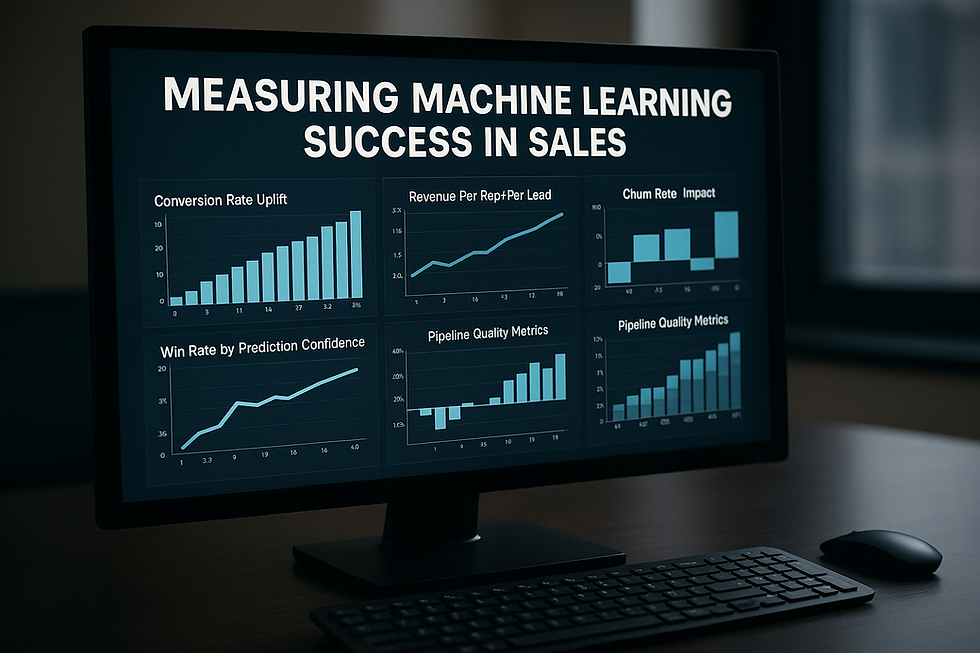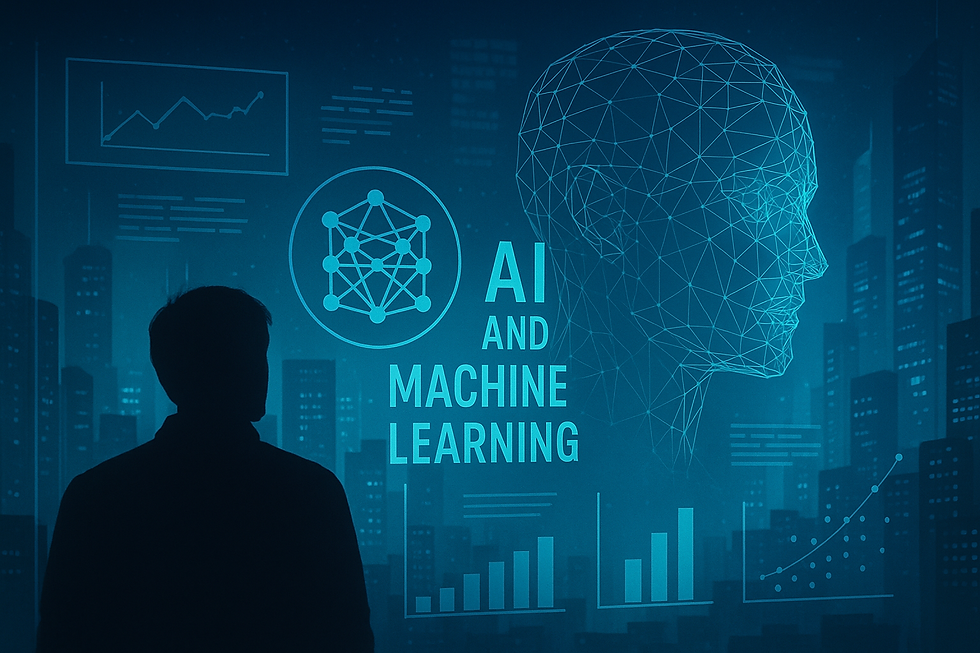What Is Deep Learning? Everything You Must Know from Basics to Breakthroughs
- Muiz As-Siddeeqi

- Sep 9
- 5 min read

No Hype. Just the Naked Truth About Deep Learning
Most people hear “deep learning” and think, “Oh, it’s like AI… but deeper?”
That’s cute.
But the truth?
Deep learning is not just deeper.
It’s wider, longer, and harder-hitting than anything the world of computation has ever seen. It’s the algorithmic bloodstream of autonomous vehicles, the voice behind your smart speaker, the heartbeat of cancer diagnostics, the eyes behind facial recognition, and yes—the brain of modern sales automation.
Bonus: Machine Learning in Sales: The Ultimate Guide to Transforming Revenue with Real-Time Intelligence
When Machines Started “Thinking in Layers”: A Raw Look at Origins
Deep learning didn’t arrive with a red carpet.
It fought, failed, and got laughed out of conferences for decades.
Let’s rewind. Real rewind.
1943 – Psychologist Warren McCulloch and logician Walter Pitts proposed a model of artificial neurons in their paper A Logical Calculus of the Ideas Immanent in Nervous Activity. That’s where the journey began.
1958 – Frank Rosenblatt introduced the Perceptron, the first true “neural network” that could learn weights. The New York Times claimed it would soon “walk, talk, see, and write.” Spoiler: It did none of those. Not then.
1986 – Geoff Hinton, David Rumelhart, and Ronald Williams published the Backpropagation breakthrough. This changed everything. Quietly. Slowly.
2012 – BOOM. Deep Learning exploded into reality when AlexNet, a deep convolutional neural network by Alex Krizhevsky, Ilya Sutskever, and Geoff Hinton, crushed the ImageNet competition. By over 10%. A landslide in AI terms.
Source: Krizhevsky, A., Sutskever, I., & Hinton, G. E. (2012). ImageNet classification with deep convolutional neural networks, NIPS.
So, What Is Deep Learning (Really)? No Fluff. No Buzzwords.
Let’s slice through the noise.
Deep learning is a subset of machine learning. It uses neural networks with many layers—hence “deep”—to model complex patterns.
In simpler words: it’s the closest thing we’ve got to mimicking the human brain with code.
We don’t manually write rules like “If X, then Y.”
We feed it data. Loads of it. It learns the rules by itself.
That’s what makes it so powerful. And also so misunderstood.
Deep Learning Is Not a Trend. It’s a Tsunami (And We Have the Numbers)
Global deep learning market size was valued at USD 13.4 billion in 2023 and is projected to reach USD 109.7 billion by 2030, growing at a CAGR of 35.6% from 2024 to 2030.
Source: Grand View Research, 2024
According to the MIT Technology Review, over 60% of AI breakthroughs since 2017 have involved deep learning models.
In 2023, OpenAI's GPT-4 had over 1.76 trillion parameters—an architectural monster only possible due to deep learning’s evolution.
Source: The Information, 2023 leak
A 2022 IDC report stated that 78% of enterprises using deep learning in their workflows observed a reduction in operational costs, especially in areas like fraud detection, customer service automation, and predictive analytics.
Source: IDC Worldwide AI and Deep Learning Spending Guide, 2022
What Powers Deep Learning? (Spoiler: Not Magic)
Here's what makes deep learning “deep”:
Layers: The architecture is built with multiple layers—input layer, hidden layers (many of them), and output layer.
Neurons: Each layer contains “neurons” that process weighted inputs and apply activation functions.
Activation Functions: Like ReLU, Sigmoid, Tanh—these decide what should “fire” and what should stay silent.
Backpropagation: A way to improve accuracy by adjusting weights based on how wrong the output was.
The Real Toolbox: Where Deep Learning Lives and Breathes
Frameworks You’ll See in the Wild:
TensorFlow – Developed by Google Brain, powering everything from healthcare diagnostics to translation tools.
PyTorch – Facebook’s answer to flexible deep learning. Used in Uber, Tesla, and OpenAI research.
Keras – A simplified wrapper over TensorFlow for fast prototyping.
MXNet, JAX, and ONNX – Used by Amazon, Google, and others behind the scenes
.
Deep Learning Needs Insane Data and Power:
A single training run of GPT-3 consumed 1,287 MWh of electricity—enough to power a small city for days.
Source: MIT Technology Review, 2021
Deep Learning in Real Life (With Real-World Impact Only)
This is where it gets real.
Spotify’s Deep Recommendation Engine:
Spotify’s personalized playlists (Discover Weekly, Release Radar) run on deep learning algorithms that analyze:
Your skip behavior
Time of listening
Playlist additions
Similar users
Their deep neural recommendation model (DNRM) contributed to a 30% increase in daily active listening minutes.
Source: Spotify Research Blog, 2022
Google DeepMind and Retinal Disease Detection:
DeepMind built a deep learning model trained on eye scans. It detects over 50 retinal diseases with 94% accuracy—on par with the world's best ophthalmologists.
Source: DeepMind and Moorfields Eye Hospital, 2018
Tesla Autopilot:
Uses deep convolutional neural networks to process:
Lidar data
Camera footage
Ultrasonic sensors
In 2023, Tesla claimed over 11 billion cumulative miles driven with Autopilot active, trained on deep neural networks.
Source: Tesla Q4 Earnings Report, 2023
Why Deep Learning Took Off (When Others Died in Silence)
We get asked this a lot: “Why did deep learning work when older AI didn’t?”
Because of three unstoppable forces:
Big Data: Billions of images, text, audio, and video for models to learn from.
GPUs: Originally built for gaming, now the backbone of deep learning compute.
Open-Source Tools: TensorFlow, PyTorch, HuggingFace—open access to elite tech for anyone.
The Breakthroughs That Will Rewrite Everything
Let’s talk now and next.
1. Transformers (The Rise of Attention Models)
BERT (by Google)
GPT-3/4 (by OpenAI)
T5, XLNet, RoBERTa
These models didn’t just “learn.” They rewrote how models read, write, and reason.
Transformers replaced RNNs and LSTMs in almost every major use case—translation, summarization, even code generation.
2. Diffusion Models (Stability AI, Midjourney, DALL·E)
They’re generating high-resolution images from text. They’re not “learning to label”—they’re learning to imagine, using real statistical sampling and reverse noise distribution.
No fiction. Just math.
Source: Ho, J., Jain, A., & Abbeel, P. (2020). Denoising Diffusion Probabilistic Models.
The Risks. Let’s Not Pretend There Aren’t Any.
We don’t do hype.
Deep learning isn’t all roses.
Data Hunger: Needs massive annotated datasets. Not always easy to get.
Black Box Nature: Hard to interpret why a model made a specific decision.
Bias: Models trained on biased data will reflect and amplify those biases. Proven. Repeatedly.
Environmental Cost: Training large models emits as much carbon as five American cars in their lifetime.
Source: Strubell et al., 2019. Energy and Policy Considerations for Deep Learning in NLP
Deep Learning in Sales: Not Hype. Hard ROI.
Let’s bring this back to your niche.
Here’s where deep learning is crushing it in real, revenue-generating sales use cases:
Lead Scoring: Deep learning models outperform logistic regression by 30%+ in qualifying high-value leads.
Source: Salesforce Research, 2023
Sales Email Optimization: NLP models based on deep learning increase reply rates by 21% in A/B-tested sequences.
Source: Outreach.io, 2023 Internal Data
Voice Analytics: Deep learning-powered voice analysis tools (like Gong.io) predict deal success by analyzing tone, pause, interruptions—resulting in a 26% increase in win rates.
Source: Gong.io Sales Benchmarks Report, 2023
Chatbots: Deep-learning-driven chatbots qualify leads 70% faster and reduce first-touch response time by 85% in high-conversion landing pages.
Source: Drift State of Conversational Marketing, 2022
You Made It Here. What Now?
Deep learning is not just another “tech trend.”
It’s rewriting how business is done, how healthcare is delivered, how decisions are made, and how sales are closed.
You don’t need to be a data scientist to care. But you do need to understand what’s happening. Because it’s happening to your business whether you want it or not.
Final Word
We’ve walked through the trenches—from 1943 neurons to 2025 transformers.
We’ve cut through the fluff and hype, with real numbers, real breakthroughs, and zero fiction.
So the next time someone throws around “deep learning” like it’s a buzzword?
You’ll know better.
Because now, you know the absolute truth.

$50
Product Title
Product Details goes here with the simple product description and more information can be seen by clicking the see more button. Product Details goes here with the simple product description and more information can be seen by clicking the see more button

$50
Product Title
Product Details goes here with the simple product description and more information can be seen by clicking the see more button. Product Details goes here with the simple product description and more information can be seen by clicking the see more button.

$50
Product Title
Product Details goes here with the simple product description and more information can be seen by clicking the see more button. Product Details goes here with the simple product description and more information can be seen by clicking the see more button.






Comments